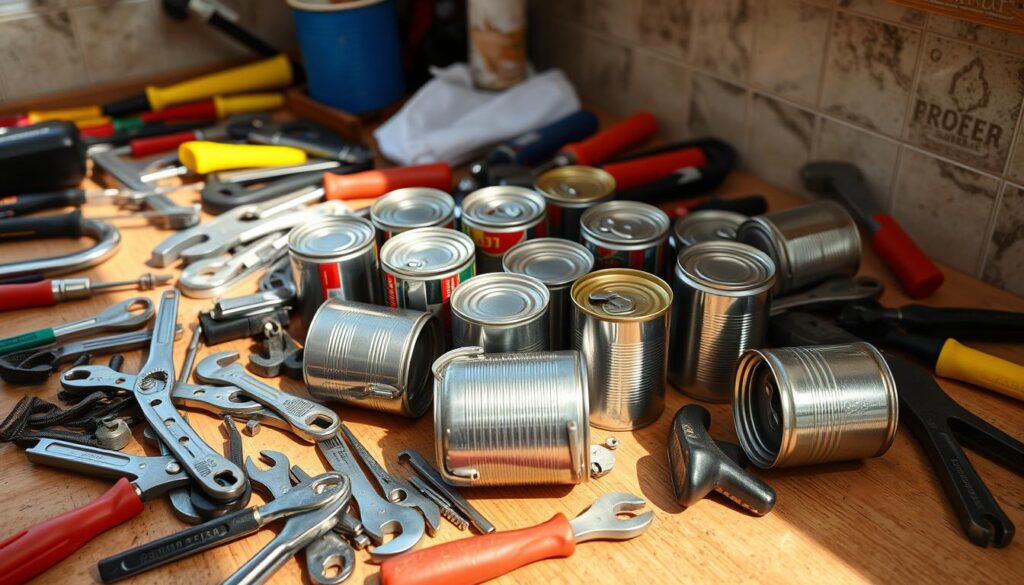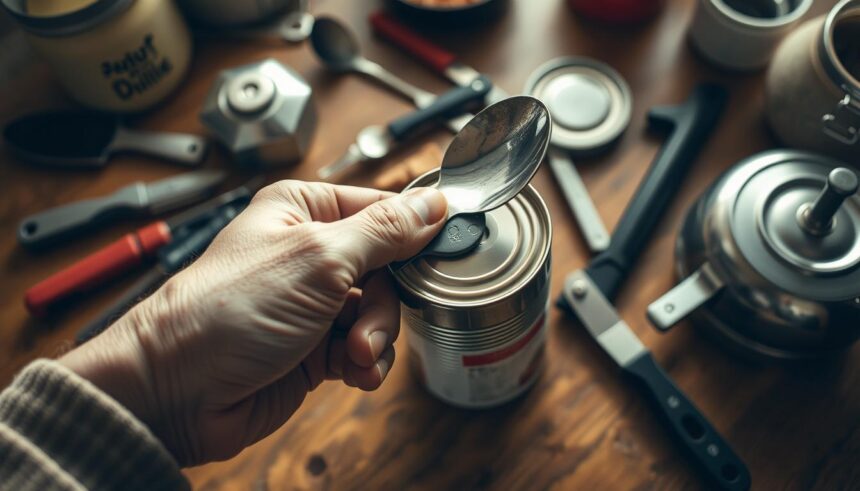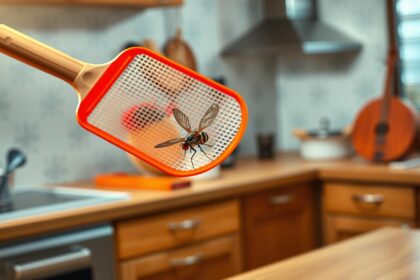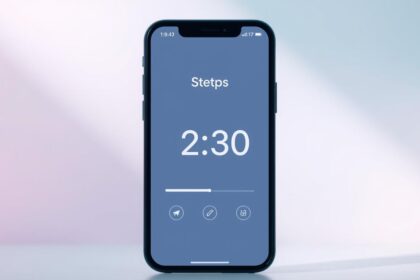We’ve all been there – you’re hungry and need to open a can, but you can’t find a can opener. It’s frustrating and can feel like a kitchen emergency. But don’t worry, you’re not alone in this struggle.
In this article, we’ll share some clever kitchen hacks to help you open cans using everyday objects. You’ll learn simple and effective techniques to get the job done, even without a can opener.
Key Takeaways
- Discover simple techniques to open cans without a can opener
- Learn how to use everyday objects as improvised can openers
- Master kitchen hacks to make cooking easier and more efficient
Why Knowing How to Open Cans Without Tools Is Essential
Emergencies and power outages can happen at any time. It’s important to know how to open cans without tools. This skill is useful not just in survival situations but also in everyday life.
Common Situations When You Might Need These Skills
You might need to open cans without tools in certain situations. This could be during camping trips, power outages, or when traveling to areas where can openers are not available. Knowing how to open cans without tools can be a lifesaver in these situations.
- Camping or hiking trips where carrying a can opener is impractical
- Power outages or natural disasters that disrupt normal supplies
- Traveling to remote areas with limited access to can openers
Benefits Beyond Emergency Situations
Mastering the skill of opening cans without tools has benefits beyond emergencies. It can save you time and effort when you’re in a hurry or when your can opener is broken. As Survival Life notes, “Being able to open cans without a can opener is a simple yet valuable skill that can make a big difference in various situations.”
| Situation | Benefit of Knowing How to Open Cans Without Tools |
|---|---|
| Camping or Hiking | Convenience and practicality |
| Power Outages | Access to food during emergencies |
| Traveling | Reduced reliance on local supplies |
Safety First: Precautions Before Attempting Any Method

When trying to open cans without the right tools, remember safety first. Before you begin, take some safety precautions to avoid injuries and make the process easier.
Protective Gear You Should Wear
Wearing the right protective gear is key to staying safe. This includes:
- Gloves for hand protection
- Eye protection to prevent injuries from sharp edges or flying debris
Gloves and Hand Protection
Gloves are essential when handling cans and sharp objects. They protect your hands from cuts and abrasions. Pick gloves that are tough and have a good grip.
Eye Protection Recommendations
Eye protection is also vital. Safety glasses or goggles can shield your eyes from harm. Make sure they fit well and don’t obstruct your vision.
Preparing Your Workspace
A clean and stable workspace is important for safe can opening. Remove any unnecessary items and ensure the surface is flat and stable. This helps prevent accidents and makes the task easier.
When to Avoid These Methods
There are times when you should not open cans without a can opener. For example, if the can is damaged or you’re unsure about its contents, it’s best to find another way. Also, if you’re not sure you can open the can safely, use a can opener or ask for help.
| Safety Precaution | Importance | Tips |
|---|---|---|
| Wearing Gloves | High | Choose durable gloves with a good grip |
| Eye Protection | High | Use safety glasses or goggles for clear vision |
| Workspace Preparation | Medium | Clear clutter and ensure a stable surface |
By following these safety precautions and being careful with kitchen safety, you can reduce risks when opening cans. Always be cautious and ready.
How to Open a Can Without a Can Opener: The Spoon Method
You can open a can with a spoon if you’re without a can opener. This trick is handy when you’re stuck without one. It’s easy, needing just a strong spoon and some effort.
Selecting the Right Spoon
First, pick a spoon that’s strong enough for the job. Look for one with a sturdy handle and a thick bowl. Metal spoons are best because they’re more durable than plastic or wood.
Step-by-Step Instructions
Initial Puncture Technique
Start by putting the spoon’s edge on the can’s lid, near the edge. Press hard and move the spoon back and forth to make a hole. It might take some time, but keep going.
Working Around the Can
After you’ve made a hole, use the spoon to widen it around the lid. As you go, you can pry the lid open more. Just be careful not to spill anything.
Tips for Success
To open a can with a spoon well, remember:
- Choose a sturdy spoon that won’t bend or break.
- Keep the pressure steady and be patient.
- Move slowly around the edge to avoid spills.
Common Mistakes to Avoid
Don’t use a thin or weak spoon, as it might break. Also, don’t press too hard, or you might hurt yourself.
The Flat Surface Technique: Using Concrete or Pavement

Opening cans without tools is easy with the flat surface technique. It’s great for outdoor use or when you don’t have a can opener.
Finding a Suitable Surface
First, look for a rough, flat area like concrete or pavement. It should be rough enough to grip the can.
Step-by-Step Instructions
Proper Can Positioning
Put the can on the surface. Make sure the lid’s edge is on the rough part.
Friction Application Method
Now, rub the lid back and forth hard. This will wear down the lid until it opens.
When This Method Works Best
This technique is best for outdoor use or emergencies. It’s also good for cans with thin lids.
Potential Challenges
It can be hard work. It might not work for cans with very thick lids.
Chef’s Secret: The Knife Method
The knife method is a trusted can-opening hack among chefs. It requires precision and caution. When you’re without a can opener, this technique can be a lifesaver. But, it’s important to be careful to avoid accidents.
Choosing the Right Knife
Choosing the right knife is the first step in opening a can with the knife method. Look for a sturdy, sharp knife with a strong blade. A chef’s knife or a utility knife works well for this task. Avoid using your best knives, as the process can potentially damage the blade.
Step-by-Step Instructions
To open a can safely, follow these steps carefully:
Safe Puncturing Technique
Start by placing the knife tip on the edge of the can’s lid, where it meets the side. Apply gentle pressure and twist the knife until it punctures the lid. Be cautious as the lid can be sharp.
Controlled Cutting Motion
After puncturing the lid, continue to apply gentle pressure while moving the knife around the edge. Use a controlled cutting motion to pry the lid open. Keep your fingers away from the knife’s path to avoid injury.
Safety Considerations
Safety is key when using the knife method. Always cut away from your body, and make sure your workspace is clear. If you’re unsure or uncomfortable, consider other methods.
Troubleshooting Common Issues
If you face problems like the knife slipping or the lid not opening smoothly, stop right away. Check the situation and adjust your technique if needed. If the can is really stubborn, it might be safer to use a different method.
As
“A good chef is always prepared with the right techniques and tools,”
says a renowned chef. They highlight the importance of knowing alternative methods like the knife technique.
The Survival Hack: Using a Metal File or Sandpaper
Opening a can without the right tool is a key survival skill. It can save your life in the wilderness or during emergencies. Having food that’s easy to get to is a big plus.
Materials Needed
You’ll need a metal file or sandpaper to open a can. Both tools can wear down the metal lid.
Step-by-Step Instructions
Creating the Initial Weak Point
Start by rubbing the metal file or sandpaper on the can’s lid edge. Keep the pressure steady to make a weak spot.
Completing the Opening
Keep filing or sanding until the lid starts to come off. Be careful as you get close to avoid spills.
Time-Saving Tips
To open faster, focus on one spot until you make a hole. Then, use that hole to get to the food inside more easily.
Adapting with Limited Resources
If you don’t have a metal file or sandpaper, look for other rough surfaces. Rocks or rough concrete can work as substitutes.
Outdoor Solutions: Opening Cans with Rocks or Rough Surfaces
You don’t need a can opener to enjoy your favorite canned goods outdoors. Camping or hiking? Use rocks or rough surfaces to open cans. It takes some effort, but it works well.
Finding the Right Rock
Search for a rock with a rough edge or sharp point. It should be strong enough to handle the force without breaking.
Step-by-Step Instructions
There are two main ways to open a can with a rock: the abrasion and puncture techniques.
Abrasion Technique
Scrub the can’s lid against the rock’s rough surface. Keep rubbing until the lid weakens and breaks off.
Puncture Technique
Use the rock’s sharp point to poke the lid. Then, move around the edge until you can pry it off.
Wilderness Adaptations
In survival situations, you might not find the perfect rock. Be ready to adjust your method based on what you have.
Cleaning and Accessing Contents
After opening, pour the contents into another container if you can. This avoids metal fragments. If eating from the can, check for sharp edges or metal shavings.
| Technique | Advantages | Disadvantages |
|---|---|---|
| Abrasion | Less risk of slipping and causing injury | Time-consuming |
| Puncture | Faster than abrasion method | Higher risk of injury if not done carefully |
Household Tools That Can Substitute for a Can Opener

When you’re faced with a can and no can opener, you might be surprised. Several household tools can help you out.
Using Pliers or Screwdrivers
You can open cans with pliers or screwdrivers. For pliers, grip the lid’s edge and twist until it starts to separate. With screwdrivers, insert the tip into the gap and pry the lid off.
Plier Technique
To use pliers well, hold the can firmly. Apply steady pressure to avoid slipping.
Screwdriver Method
When using a screwdriver, be careful not to puncture the contents. Also, avoid slipping and causing injury.
The Hammer and Chisel Method
A hammer and chisel can also open a can. This method needs patience and caution to avoid accidents.
Other Improvised Tools
Other improvised can openers include knives and metal files. Each tool has its own way and safety tips.
Ranking Methods by Effectiveness
The success of these methods varies. Pliers or a screwdriver are quick and effective. The hammer and chisel method is more work but reliable.
Different Types of Cans and Special Considerations
Not all cans are the same. Knowing the different types helps you open them better. You’ll face various challenges, and knowing these differences is key to picking the right way to open them.
Pull-Tab Cans
Pull-tab cans are easy to open without a can opener. But if the tab breaks, you’ll need another way. You can use a spoon or knife to pry the lid open. Just be careful not to spill anything.
Pressurized Cans
Pressurized cans, like those with spray paint or whipped cream, need extra care. Always point the lid away from you when opening. This helps avoid injury from the pressure release.
Vintage or Unusual Can Types
Vintage or unusual cans might not have modern openers. You might need a sharp object like a knife or metal file to open them. Old cans can be brittle and break easily, so handle them gently.
Size and Material Variations
Cans come in all sizes and materials, from thin tin to heavy-duty. The opening method depends on the can’s material and size. Larger cans might need more force or a different tool. Thinner cans require more care to avoid crushing.
Knowing these differences helps make opening cans easier and safer. It doesn’t matter what type you’re dealing with.
Food Safety: Handling Contents After Alternative Opening Methods
After opening a can, you need to check if the food is safe. Using different ways to open a can can sometimes harm the food inside.
Checking for Metal Fragments
Opening a can in an unusual way can lead to metal pieces in your food. To stay safe, carefully inspect the contents and the can’s edge for metal shavings. If you find any, move the food to a clean container to avoid eating it.
Proper Storage of Partially Used Cans
If you don’t finish the can, store the leftover food right. Use plastic wrap or aluminum foil to cover the can, or put the food in an airtight container. Then, refrigerate it quickly to keep it fresh.
When to Discard Contents
If the food smells bad, looks slimy, or has mold, throw it away right away. Also, if the can is badly damaged or leaking, it’s best to throw away the food.
Cleaning Up Safely After Opening
After opening a can, clean up well to avoid health risks. Get rid of any sharp edges or metal pieces safely. Then, wash your hands well after touching the can and its contents.
Which Method Works Best: Comparing All Techniques
Let’s look at different ways to open cans without a can opener. We’ll see which one is the best for you. We’ll check their speed, safety, effort needed, and how well they work in different situations.
Fastest Methods
For quick can opening, some methods are better than others. The spoon method and the knife method are the quickest. But, they need skill and care to avoid accidents.
- The spoon method is fast, taking 1-2 minutes.
- The knife method is quick but needs more caution.
Safest Methods
When opening cans, safety is key. The spoon method is safe because it avoids sharp edges. The flat surface technique is also safe if done carefully.
- The spoon method is safe from sharp edges.
- The flat surface technique is safe with a stable surface.
Methods Requiring Least Effort
If you want the easiest method, try using household tools. Tools like pliers or screwdrivers make it simpler, even if it’s not the fastest.
Best Methods for Different Situations
Each situation needs a different approach. For outdoor use, a rock or rough surface is practical. In survival, the metal file or sandpaper method is useful. Choose a method that fits your environment and resources.
- Outdoor situations: Rock or rough surface method.
- Survival situations: Metal file or sandpaper method.
- Indoor with tools: Household tools method.
Conclusion
You now know how to open cans without a can opener. This is a great kitchen hack that can really help in survival situations. By trying out the methods from this article, you’ll get better at handling cans.
Always keep safety first when opening cans without a can opener. Make sure there are no metal pieces, store half-used cans right, and clean up well after opening.
These survival skills will help you deal with daily and unexpected problems. So, if you’re without a can opener next time, don’t worry. Just use what you’ve learned, and you’ll enjoy your canned food soon.













